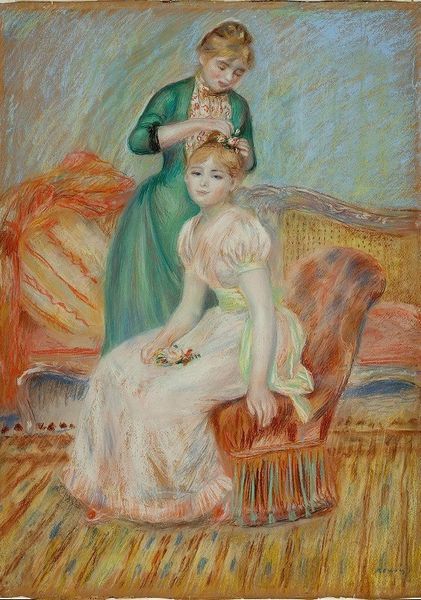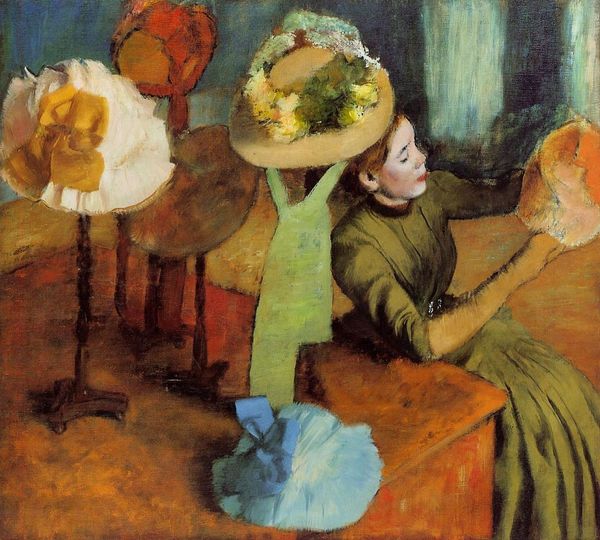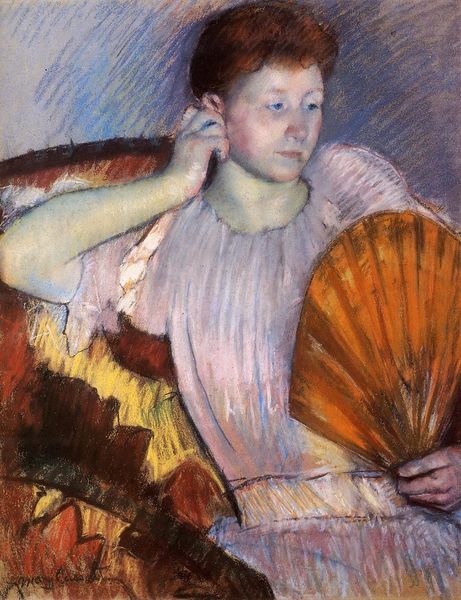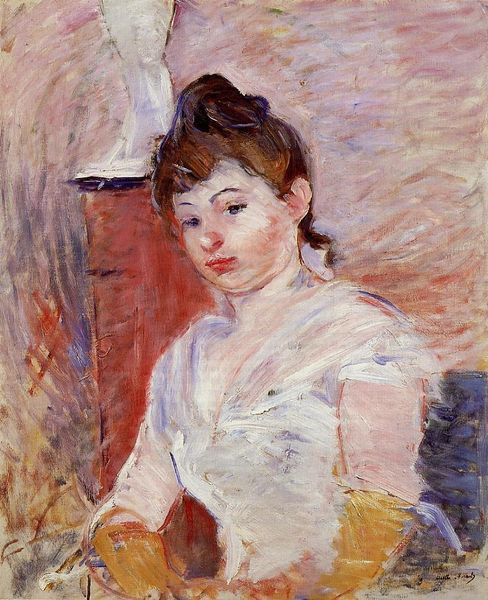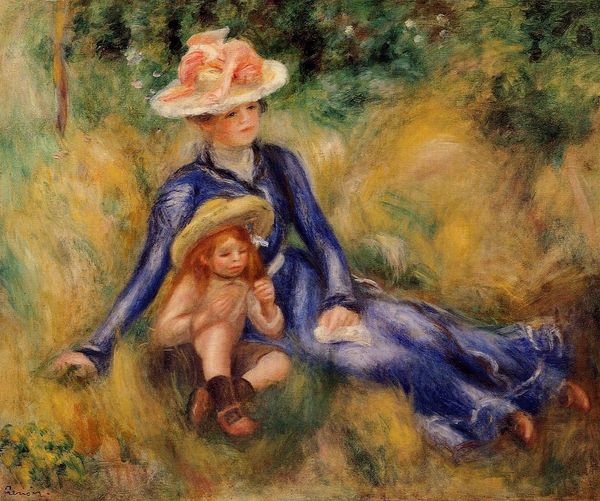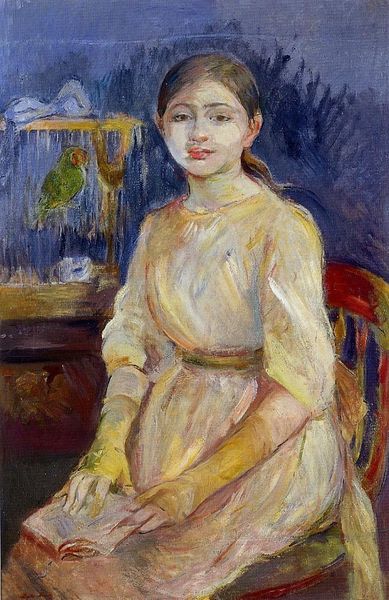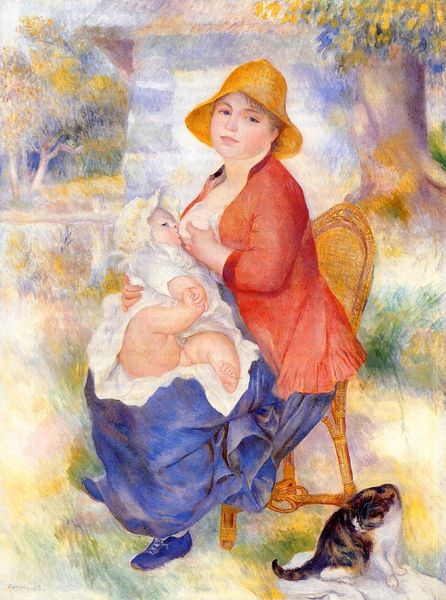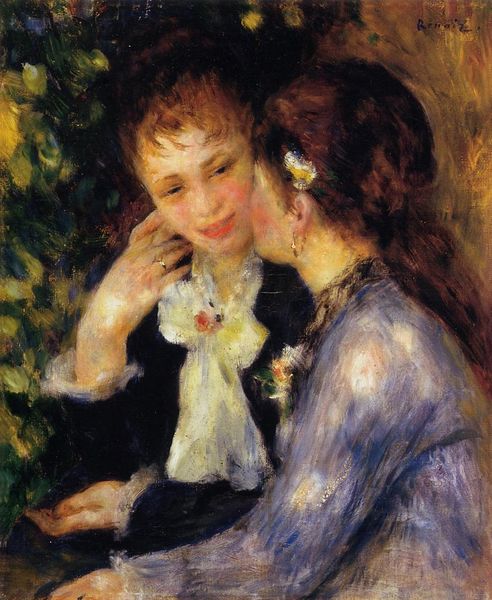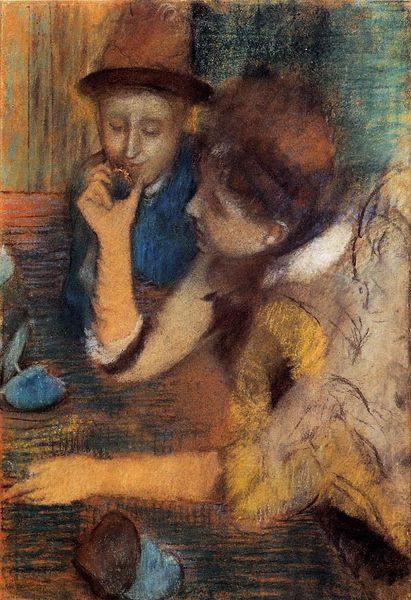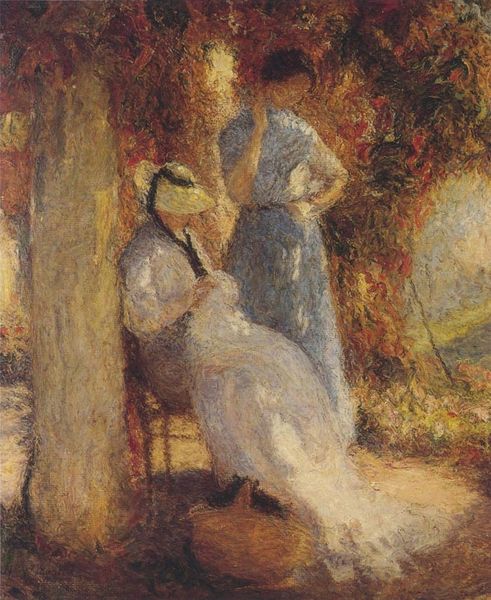
painting, oil-paint
#
portrait
#
painting
#
impressionism
#
oil-paint
#
oil painting
#
group-portraits
#
genre-painting
#
portrait art
Copyright: Public domain
Curator: This is "The Coiffure," painted by Pierre-Auguste Renoir in 1888. Immediately, there’s a sense of intimacy. I feel like I'm intruding on a private moment between these two women. Editor: And yet, it's rendered in this almost casual, seemingly effortless Impressionist style. I am drawn to how the visible brushstrokes and textures call attention to the act of painting itself – the layering of the oil paints. It seems to really embrace and emphasize the material, tangible qualities of paint as an artistic medium, like so many in his period. Curator: Exactly, which I find adds to that sense of immediacy and vulnerability. The young woman seated looks so relaxed. Almost dream-like, lost in thought, her red hair softly illuminating her features. Is it the softness or a slight blurriness in the features which I find creates a meditative state? Editor: The fabrics too are important here. Think of the textile industry, the fashion, and even the division of labour required to produce the dresses these women wear! What can we glean from examining their clothing in the broader social context of the late 19th century, from fabric production, consumerism, to perhaps also the women’s class or societal roles? Curator: Good point. I can only imagine it signifies something else in that light, but for me the interplay of textures - the smoothness of her dress versus the implied roughness of the chair's fabric – it creates such a satisfying sensory experience, doesn't it? Also, look at the dress's colors contrasted to that chair...I swear, he somehow painted air itself, capturing not just what we see, but how it feels to simply exist in a fleeting moment! Editor: I’m curious about the positioning of the women and their bodies in relationship to one another and the space. The material choices here clearly reflect consumerism within a societal construct. Renoir highlights not just the beauty, but the infrastructure surrounding them – how material production played a part in structuring gendered activities. Curator: And to take on Renoir's point about production in consumerism; I keep asking myself: are they simply caught in the act of ‘fixing hair’, or does this quiet ritual have layers? I feel the work challenges a historical perspective: instead asking a deeper introspective question - what will their individual journeys hold in the tapestry of society itself? Editor: Precisely. Seeing it that way, it’s as if each visible brushstroke underscores this reality. A simple oil painting on canvas prompts to us examine our present situation, urging reflections about individual and collective consumption of material resources that influence or frame experience itself. Curator: Yes... a conversation between color, form, and texture that transcends time. Almost like gazing into a mirror. Editor: Absolutely, it makes me appreciate just how crucial analyzing material production and context is when deciphering artwork—allowing art and audience to converge and consider not only its beauty but its broader impact and meaning within any epoch.
Comments
No comments
Be the first to comment and join the conversation on the ultimate creative platform.
